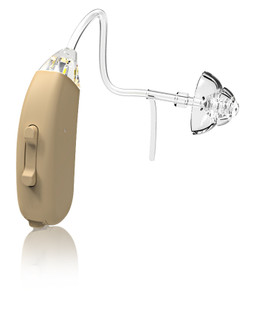Say Goodbye to Frustration with Bluetooth Hearing Aids
Posted by DR Paul on Jun 29, 2024
Are you having trouble
with your Bluetooth hearing aids? Whether you're a seasoned user or new to
digital hearing aids, connectivity issues can be frustrating. But don't
worry—you're not alone. Many hearing aid users face similar challenges. In this
blog post, we'll walk you through common connectivity problems and offer
practical solutions to help you hear better. From simple troubleshooting steps
to advanced tips, we've got you covered.
Understanding Bluetooth Hearing Aids
What Are Bluetooth Hearing Aids?
Bluetooth hearing aids are a marvel of modern technology. They connect wirelessly to devices like smartphones, TVs, and computers, allowing you to stream audio directly to your ears. This feature enhances the overall hearing experience, making it easier to engage in phone calls, watch TV, and enjoy music.
Benefits of Bluetooth Hearing Aids
The main benefit of Bluetooth hearing aids is convenience. Imagine taking a phone call or listening to music without needing extra devices. These hearing aids also offer better sound quality and make it easier to manage multiple devices from one central hub, usually your smartphone.
How Bluetooth Technology Works in Hearing Aids
Bluetooth technology works by transmitting data over short distances using radio waves. When you pair your hearing aids with another device, they form a connection that allows for seamless audio streaming. Understanding this basic principle can help you troubleshoot common problems more effectively.
Common Connectivity Issues
Pairing Problems
One of the most common issues is difficulty pairing Bluetooth hearing aids with other devices. This could be due to software incompatibility, outdated firmware, or simply user error.
Interference and Signal Dropouts
Interference from other electronic devices or physical obstructions can cause signal dropouts, making the audio experience frustrating.
Battery Life Concerns
Bluetooth features can drain the batteries of your hearing aids faster than usual. Knowing how to manage battery life is crucial for uninterrupted audio streaming.
Basic Troubleshooting Steps
Restart Your Devices
Sometimes, a simple restart can solve many connectivity issues. Turn off both your hearing aids and the device you're trying to connect to, then turn them back on.
Check Bluetooth Settings
Ensure that Bluetooth is enabled on both your hearing aids and the connecting device. Double-check if the devices are in pairing mode and close enough to each other for a stable connection.
Update Firmware and Software
Outdated firmware or software can cause connectivity issues. Make sure both your hearing aids and the connecting device have the latest updates installed.
Advanced Troubleshooting Tips
Reset Pairing
If basic troubleshooting steps don't work, try resetting the pairing settings on both devices. Remove the hearing aids from the list of paired devices and start the pairing process from scratch.
Manage Interference
Keep your hearing aids and connecting devices away from other electronic gadgets that might cause interference. Moving to a location with fewer electronic devices can help.
Optimize Battery Performance
To extend battery life, turn off Bluetooth features when not in use. Some hearing aids also offer power-saving modes that can help manage battery consumption.
Ensuring Long-term Connectivity
Regular Maintenance
Regularly clean your hearing aids and ensure they are free from earwax or other debris. Clean devices are less likely to experience connectivity issues.
Use High-Quality Accessories
Investing in high-quality chargers and batteries can make a significant difference in the performance of your hearing aids.
Consult Your Audiologist
If you're still experiencing issues, consult your audiologist. They can offer personalized advice and may even update the firmware of your hearing aids for better performance.
Leveraging Technology for Better Hearing
Apps and Software
Many hearing aids come with companion apps that offer additional controls and settings. Using these apps can help you manage your hearing aids more efficiently.
Voice Assistants
Some advanced hearing aids can integrate with voice assistants like Siri or Google Assistant, offering hands-free control for an enhanced user experience.
Future Trends
The future of Bluetooth hearing aids looks promising, with advancements in AI and machine learning offering even more personalized and efficient solutions for users.
Real-Life Examples
User Stories
Hearing from other users can be incredibly reassuring. Many people have successfully resolved their connectivity issues by following simple troubleshooting steps.
Expert Opinions
Experts often recommend keeping software and firmware updated as the most effective way to avoid connectivity issues. Regular consultations with an audiologist can also provide valuable insights.
Product Reviews
Reading product reviews can help you understand common issues and how other users have resolved them. Websites like hear-better.com offer detailed reviews and user feedback.
Additional Resources
Online Forums
Online forums and communities can be a great resource for troubleshooting tips and advice from fellow hearing aid users.
Manufacturer Support
Most hearing aid manufacturers offer robust customer support and troubleshooting guides on their websites. Don't hesitate to reach out if you're facing persistent issues.
Professional Help
For complex issues that can't be resolved through basic troubleshooting, seeking professional help is always a good idea. Audiologists and hearing aid specialists have the expertise to diagnose and fix the problem.
Dealing with connectivity issues in Bluetooth hearing aids can be frustrating, but it's not insurmountable. By understanding how these devices work and following the troubleshooting steps outlined in this post, you can significantly improve your hearing experience. Remember, the key to hearing better lies in regular maintenance, staying updated with the latest software, and using high-quality accessories. If all else fails, don't hesitate to consult your audiologist for professional advice.
Ready to take control of your hearing experience? Visit hear-better.com for more tips and resources. And feel free to share your own experiences and solutions in the comments below!










